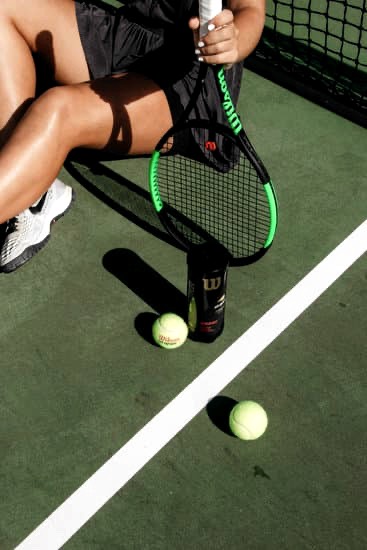
Tennis racquets are an essential tool for any tennis player. A well-chosen racquet can make all the difference when it comes to performance on the court. In this article, we will explore the different types of tennis racquets, factors to consider when choosing a racquet, and how to make sure you get the right grip size and weight to suit your playing style and needs. There are three types of tennis rackets: Power racquets which are designed for players who need a little extra oomph in their shots. Control racquets, ideal for players who need precision and accuracy. And finally, tweener racquets which are a happy medium between power and control, making them suitable for players who want a balance between the two.
Types of Tennis Racquets
- Power Racquets: Crush the Competition with These Heavy-Hitters
- Control Racquets: Master Precision and Consistency with These Picks
- Tweener Racquets: The Perfect Blend of Power and Control
Each type of racquet has its own set of features that distinguish it from the others.
For example, power racquets tend to have larger heads, longer lengths, and stiffer frames to help generate more power in your shots. Control racquets, on the other hand, typically have smaller heads, lighter weights, and more flexible frames to give you greater control over your shots. Tweener racquets often strike a balance between these features, providing a middle ground that can be suitable for a wide range of players.
The Key Factors to Consider When Selecting Your Perfect Racquet
Choosing the right tennis racquet is a crucial step in ensuring that you are able to play to the best of your ability. When selecting a racquet, there are several factors to consider, including your skill level, playing style, age, and physical condition. It’s also important to get the right grip size and weight for your racquet, as this can have a significant impact on your performance.
Find the Right Grip Size and Weight for Your Tennis Racquet

Anatomy of a Tennis Racket
Tennis racquets are made up of several key parts that work together to produce a player’s desired shot.
The Four Essential Components of a Tennis Racquet:
- Frame
- Head
- Strings
- Grip

The materials used to make tennis racquets can also have a significant impact on the racquet’s performance and durability. The most common materials used to construct tennis racquets are graphite, aluminum, and titanium. Graphite is a popular material for tennis racquets because of its lightweight, durability, and stiffness. Aluminum racquets are generally less expensive than graphite racquets and are suitable for beginner or intermediate players. Titanium racquets are known for their durability and resistance to wear and tear.
Keep Your Racquet in Top Condition: Cleaning, Stringing, and More
To keep your tennis racquet in top condition, it’s important to take good care of it.
One of the most important things you can do to maintain your tennis racquet is to keep it clean.
Use a damp cloth to wipe down the racquet after each use to remove any dirt or debris that may have accumulated on it. Avoid exposing your racquet to extreme temperatures, as this can cause the frame to warp or the strings to break. Regularly restringing your racquet can also help maintain its performance and improve its lifespan.
Signs Your Racquet Needs Replacing: Don’t Wait Until It’s Too Late
It’s also important to know when it’s time to replace your tennis racquet. Signs of wear and tear, such as cracks or warping in the frame, broken or frayed strings, or a worn-out grip, are indications that it may be time to replace your racquet. Replacing your tennis racquet when it has reached the end of its lifespan can help ensure that you are playing with the best equipment possible, and can help you continue to improve your game on the court.
Choosing the right tennis racquet is an essential part of any tennis player’s journey. By understanding the different types of racquets available, as well as the factors to consider when selecting a racquet, players can find a racquet that fits their style and needs. Additionally, understanding the anatomy of a tennis racquet and how to maintain and care for it can help players keep their equipment in top condition and extend its lifespan.
With the right tennis racquet in hand, players can unleash their full potential on the court and take their game to the next level. Whether you’re a beginner or an experienced player, taking the time to explore the different types of tennis racquets, try out different grips, and understand how to maintain your racquet can help you reach new heights in your tennis journey. So, get out there, find the perfect racquet for you, and let your game speak for itself.
